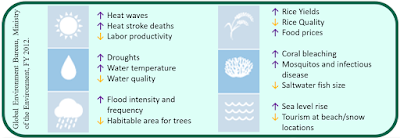As we saw
previously, certain renewable energy sources are more in abundance than others. The biggest is solar, and one magnitude smaller is wind. One magnitude smaller again is biomass, and smaller than that in one magnitude again are geothermal energy, wave-tidal energy, and hydro-power. Abundance however does not solely determine which technologies are most viable to reach the 80% or more greenhouse gas (GHG) emission reduction targets by 2050. This also depends on the maturity of the technology, and whether or not it emits GHGs to begin with. Given these limitations, there are four main pathways to reach 80% GHG emission reduction by 2050.
Nuclear power generation
Nuclear power has as advantages that during generation there is no emission of the main GHG CO2 or methane (CH4), and it can be produced continuously, as opposed to intermittent renewables like solar and wind. Japan possesses over 60 years’ experience with this technique, a large amount of infrastructure and knowledge workers in the nuclear industry. Before the 2011 GEJET, Japan had 54 nuclear reactors in operation. Since then most of all had shut down for regular maintenance, after which the safety regulations have tightened and prevented restarting regularly scheduled operations. Due to the stricter regulations, some of the older plants have seen early retirement. 42 reactors remain capable of a restart, of which 24 have requested approval to restart. Plans from 2010 from the METI envisioned 50% of the total electricity coming from nuclear power; a plan that could be reawakened.
Disadvantages to nuclear power include Japan’s tectonically active location, leading not only to a high chance of natural hazards with potential disastrous effects as seen in the aftermath of the GEJET, but also a lack of safe storage space for the small amount of waste that remains unable to be processed further after nuclear power generation. A second issue is the reliance on imported uranium, as this resource cannot be mined in Japan itself. Some of the countries that have the most abundant uranium resources are Australia, Kazakhstan, and Uzbekistan, with whom political ties are likely to remain good. The environmental impacts of mining uranium however are often not factored into the cost of the resource. The third issue is that only several kg of nuclear material are needed in order to create nuclear weapons, and an large nuclear power plant produces several hundreds of kg annually. One the one hand, this makes any nuclear facility a potential target for terrorists and raises security issues until a more peaceful global society is created. On the other hand, the current reality is that Japan cannot fully abandon its nuclear power installations due to the necessity of using the hypothetical capability of producing nuclear weapons within several weeks as a potential threat for certain international political maneuvers, as instigated by other countries. This situation is unlikely to change in a significant way until the global powers are reorganized, or a stronger focus on global peace is enforced throughout citizens of all countries, including their governments.









